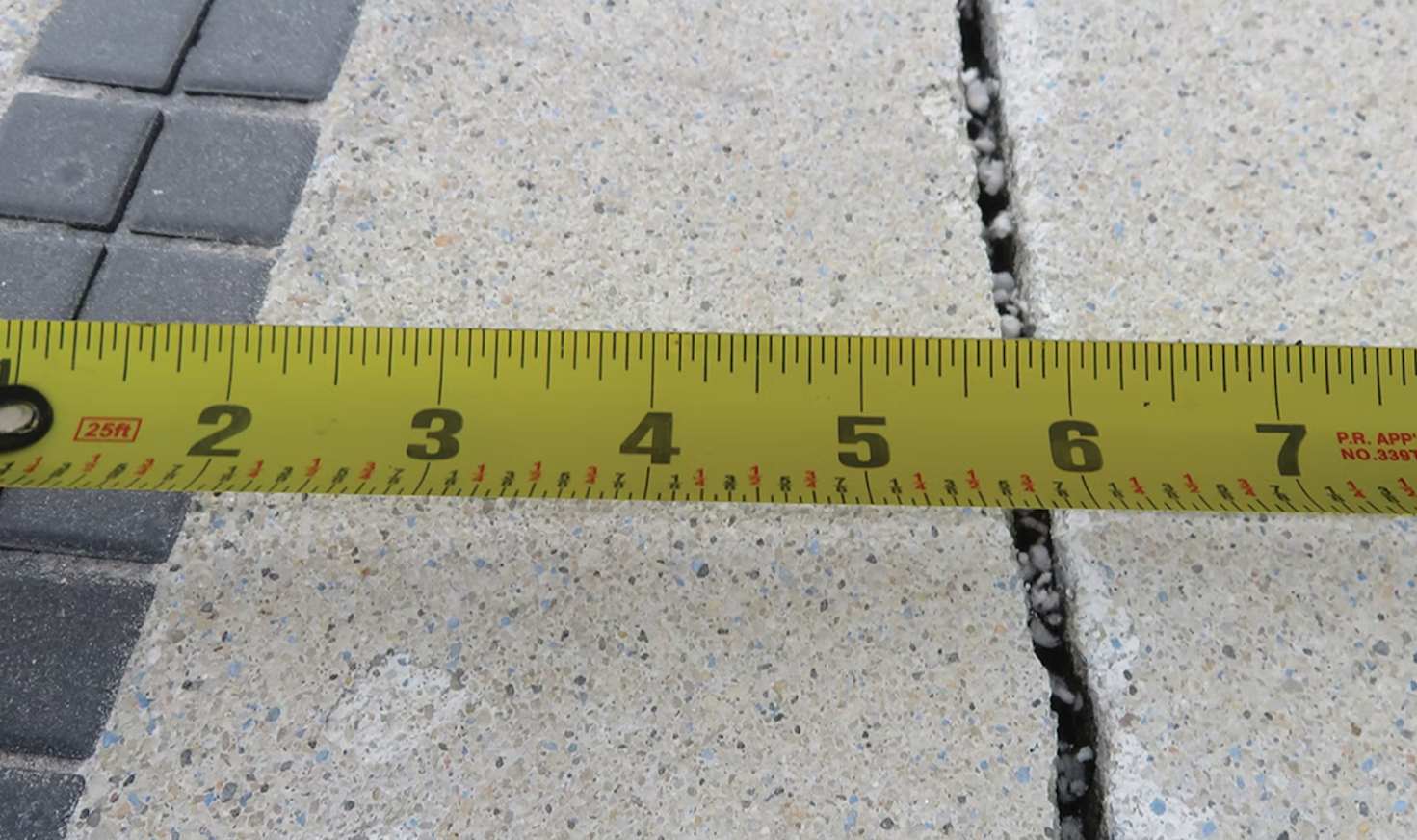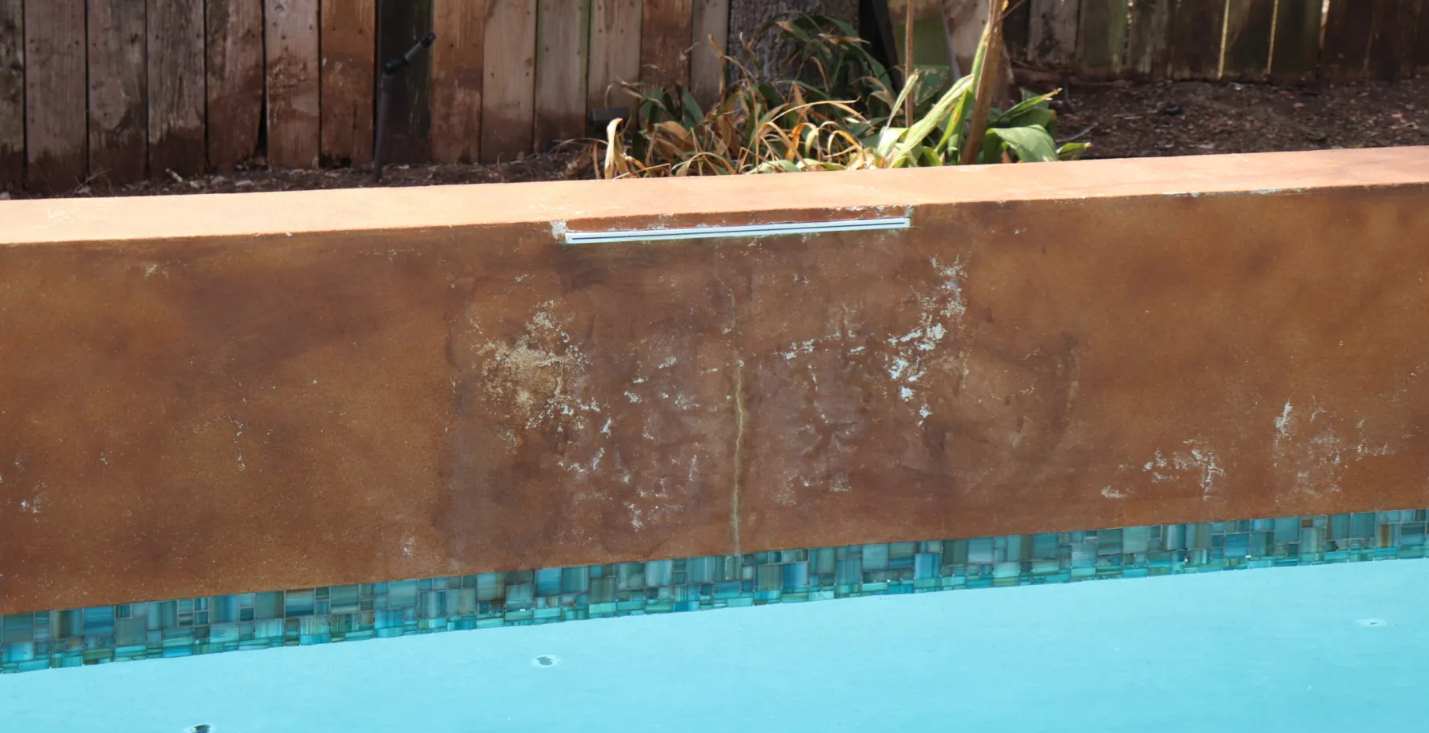Impact of Concrete Cancer on Central Texas Pools: In recent years, Central Texas has seen a disturbing increase in the incidence of a phenomenon known as “Concrete Cancer.” This term refers to the destructive process caused by Alkali-Silica Reaction (ASR), a chemical reaction within concrete that has led to significant structural damage in swimming pools across the region.
For homeowners, this issue has not only resulted in costly swimming pool repair but also raised serious concerns about the long-term viability of their pools. For pool builders and contractors, ASR has become a major challenge, contributing to a wave of lawsuits and even forcing some companies out of business.
ASR has particularly affected pools built between 2017 and 2023—a period marked by a surge in pool construction, possibly driven by the increased demand during the COVID-19 pandemic. As more and more pools begin to show signs of this problem, it has become clear that understanding ASR is crucial for both preventing and addressing the damage it causes.
This article aims to provide a comprehensive overview of ASR, including its causes, symptoms, and the steps that can be taken to mitigate its effects. By the end of this article, readers will have a deeper understanding of this destructive process and how to protect their investments from its impact.
What Is Alkali-Silica Reaction (ASR)?
Alkali-Silica Reaction (ASR) is a complex chemical process that occurs within concrete when certain conditions are met.

Understanding ASR
Specifically, ASR happens when the alkali present in cement reacts with silica found in specific types of aggregate materials. This reaction produces a gel-like substance that, when exposed to moisture, begins to swell. As the gel expands, it exerts pressure on the surrounding concrete, leading to the formation of cracks. These cracks can then allow more water to enter, which perpetuates the cycle of damage, eventually compromising the structural integrity of the concrete.
In the context of swimming pools, ASR is particularly problematic because pools are constantly exposed to water, which accelerates the reaction. The term “Concrete Cancer” has been coined to describe ASR because, like cancer, it spreads through the concrete, weakening it from within and making repairs challenging and costly. Once ASR begins, it is difficult to stop, and the damage can be extensive, requiring substantial interventions to restore the pool’s structure.
The Science Behind ASR
The science behind ASR involves a chemical reaction between the hydroxyl ions in the alkali of the cement and the amorphous silica found in the aggregate. The reaction results in the formation of an alkali-silica gel. This gel, when exposed to water, swells and increases in volume. The pressure generated by this swelling is what causes the concrete to crack.
The process is exacerbated in environments where the concrete is exposed to consistent moisture, such as in swimming pools. The cracks formed by ASR allow more water to seep into the concrete, which feeds the reaction further and leads to more cracking. Over time, this can cause significant structural issues, including leaks, surface spalling, and even the eventual failure of the concrete structure.
Impact of Concrete Cancer on Central Texas Pools
Central Texas has become a hotspot for ASR-related issues, particularly in pools constructed in the last several years. Several factors contribute to this, including the specific types of aggregate materials used in the region and the climate, which often includes high humidity and frequent rainfall.
Why Central Texas?
The construction boom in Central Texas, especially during the pandemic years, led to a rush in pool installations, which may have resulted in lapses in quality control. The shortage of key materials like fly ash, which is used to mitigate ASR, further exacerbated the problem.
The pools most commonly affected are those built between 2017 and 2023, a period that saw a dramatic increase in pool construction. During this time, the demand for construction materials was high, and in some cases, contractors may have used materials without adequately testing them for ASR potential. As a result, many pool owners are now facing the consequences of these rushed projects.
Common Symptoms of ASR in Pools
Recognizing the early signs of ASR is crucial for pool owners. Common symptoms include the appearance of cracks, particularly in a scaly or map-like pattern, known as “map cracking” or “alligator cracking.” Other signs include rust stains on the pool surface, white build-up around cracks, and the separation of pool components such as stairs and decking. Pools affected by ASR may also exhibit unusual leaks, with water levels dropping more quickly than normal, and calcium deposits around the cracks.
These symptoms indicate that the concrete is undergoing the destructive effects of ASR, and immediate action is required to assess the extent of the damage and determine the best course of action. Unfortunately, once ASR takes hold, the damage is typically irreversible without significant intervention, often necessitating the demolition and reconstruction of the affected pool.
Preventative Measures and Solutions
Preventing ASR
Preventing ASR in concrete structures, especially swimming pools, involves careful planning and material selection. Pool builders must work with reputable concrete suppliers who test aggregates for reactivity. This includes choosing a concrete mix that contains pozzolans, such as fly ash, slag, or silica fume, which can reduce the permeability of concrete and minimize the potential for ASR to develop. Using high compressive strength concrete and optimizing the reinforcement design to control shrinkage cracks are also critical steps in preventing ASR.

Additionally, it’s important to mitigate moisture intrusion into the concrete by applying waterproofing treatments and ensuring proper drainage around the pool area. Educating homeowners about the importance of maintaining good drainage and promptly addressing any cracks or leaks can also help prevent ASR from developing.
Steps to Take if Your Pool Is Affected
If you suspect that your pool may be suffering from ASR, it’s essential to act quickly. The first step is to contact your pool builder or a professional engineer who can conduct a thorough inspection of the pool. Diagnosing ASR typically involves extracting core samples from the concrete and having them analyzed by a forensic engineering company. This analysis will confirm whether ASR is present and to what extent it has damaged the concrete.
Unfortunately, the most common solution for pools affected by ASR is complete demolition and rebuilding. While this may seem drastic, it is often the only way to ensure the long-term stability and safety of the pool. Pool owners should also consult with their insurance companies to determine if any coverage is available for the repairs and to explore their legal options if the issue resulted from negligence during construction.
Conclusion:
Alkali-Silica Reaction, or “Concrete Cancer,” is a serious issue that has affected many pools in Central Texas, particularly those built in the last decade.
This destructive chemical process can lead to significant structural damage, leaving pool owners with costly repairs and difficult decisions. Understanding ASR, recognizing its symptoms early, and taking preventative measures are essential steps for protecting your pool investment.
For those already dealing with ASR, working with experienced professionals to diagnose and address the issue is crucial for ensuring the safety and longevity of the pool. By staying informed and proactive, pool owners can mitigate the risks associated with ASR and enjoy their pools for years to come. you may happy to Read this Blog “Impact of Concrete Cancer on Central Texas Pools”
FAQ Section: Impact of Concrete Cancer on Central Texas Pools
What does “Concrete Cancer” look like in a pool?
“Concrete Cancer,” caused by Alkali-Silica Reaction (ASR), typically manifests as cracks in a scaly or map-like pattern on the surface of the pool, known as “map cracking” or “alligator cracking.”
Other signs include rust stains, white build-up around the cracks, and the separation of pool components such as stairs and decking. These symptoms indicate that the concrete is deteriorating from within, which can lead to leaks and further structural damage if not addressed promptly.
How can I prevent ASR in my pool?
Preventing ASR in your pool involves working with a reputable pool builder who uses tested, high-quality materials. Ensure that the concrete mix contains pozzolans like fly ash or slag, which reduce the permeability of concrete and minimize the risk of ASR.
Additionally, proper waterproofing, good drainage, and regular maintenance to prevent moisture intrusion are key to protecting your pool from ASR.
What should I do if I suspect my pool has ASR?
If you suspect that your pool is affected by ASR, the first step is to contact your pool builder or a professional engineer for an inspection. They will likely recommend a core sample analysis to confirm the presence of ASR.
If ASR is detected, the typical solution involves demolishing and rebuilding the pool to prevent further damage and ensure long-term safety.
Why is ASR more common in Central Texas pools built between 2017 and 2023?
The increase in ASR cases in Central Texas pools built between 2017 and 2023 is likely due to a combination of factors, including a construction boom during this period, shortages of key materials like fly ash, and possibly rushed construction practices to meet high demand. These factors may have contributed to the use of concrete mixes more susceptible to ASR, leading to the widespread issues seen today.
Is there any legal recourse if my pool has ASR due to poor construction practices?
Yes, if your pool has ASR and it is determined that the issue resulted from negligence during construction, you may have legal recourse against the pool builder or contractor. It is advisable to consult with an attorney who specializes in construction law to explore your options, which may include filing a lawsuit for breach of contract, negligence, or deceptive trade practices.
